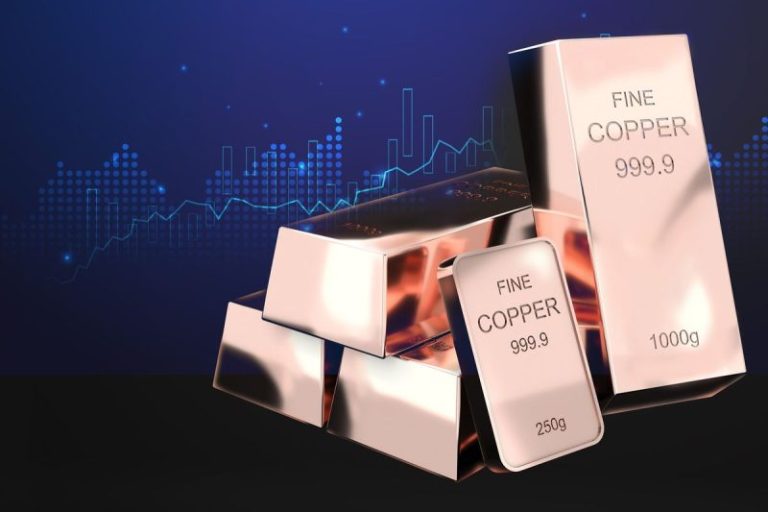An environmental advocacy group accused of trying to manipulate judges organized a years-long, nationwide online forum with jurists to promote favorable info and litigation updates regarding climate issues – until the email-styled group chat was abruptly made private, Fox News Digital found.
The Climate Judiciary Project (CJP) was founded in 2018 by a left-wing environmental nonprofit, the Environmental Law Institute (ELI), and pitches itself as a ‘first-of-its-kind effort’ that ‘provides judges with authoritative, objective, and trusted education on climate science, the impacts of climate change, and the ways climate science is arising in the law.’
But critics, such as Sen. Ted Cruz, R-Texas, say CJP is funded by China and left-wing activists for one purpose.
‘They fund CJP to train judges,’ Cruz said during a June hearing. ‘So, quote, unquote, train in climate science and make them agreeable to creative climate litigation tactics. Then, these left-wing bankrollers turn around and fund the climate litigators who will bring these bogus cases before those same judges that they’ve just indoctrinated.
‘This is like paying the players to play and paying the umpire to call the shots the way you want.’
The group, however, says it provides ‘neutral, objective information to the judiciary about the science of climate change as it is understood by the expert scientific community and relevant to current and future litigation.’
One of the efforts CJP launched included rolling out an email-styled listserv by which leaders from the Climate Judiciary Project could message directly with judges, documents obtained by Fox News Digital show. The listserv was launched in September 2022 and maintained until May 2024, according to the documents. A portal website page for the forum was previously publicly available, with an archived link saved in July 2024 showing there were 29 members in the group.
‘Judicial Leaders in Climate Science,’ the archived website link reviewed by Fox Digital reads, accompanied by a short description that the group was a ‘Forum for Judicial Leaders in Climate Science to share resources.’
A link to the forum now leads to an error warning, stating, ‘Sorry, but that group does not exist.’
Fox News Digital obtained the archived chat history of the forum, which detailed numerous messages between at least five judges and CJP employees trading links on climate studies, congratulating one another on hosting recent environmental events, sharing updates on recent climate cases that were remanded to state courts, and encouraging each other to participate in other CJP meet-ups.
One message posted by Delaware Judge Travis Laster, vice chancellor of the Delaware Court of Chancery, features a YouTube video of a 2022 climate presentation delivered by a Delaware official and a Columbia University professor that focused on the onslaught of climate lawsuits since the mid-2000s. It also included claims that such lawsuits could one day bankrupt the fuel industry.
Laster shared the video in the group with a disclaimer to others: ‘Please do not forward or use without checking with me’ as the video is ‘unlisted’ on YouTube and not publicly available.
A handful of other judges responded to Laster’s video and message, praising it as ‘great work.’
‘This is great work/great stuff, Travis; congrats on a job well-done, & thank you so much for sharing this!,’ Indiana Court of Appeals Judge Stephen Scheele responded, according to documents obtained by Fox News Digital.
Another judge in a Nebraska county court added that he had not watched the video yet but said the state court administrator’s office was interested in a similar program focused on ‘litigation and climate change.’ The Nebraska judge said he ‘may need to lean on all of you for guidance and direction.’
The judges’ correspondence on the forum included their typical email signatures, showcasing their job titles as ‘judge’ as well as which court they preside over.
The climate activists also posted messages directed to the judges on the listserv, Fox News Digital found, including a science and policy analyst at the Environmental Law Institute posting a lengthy message on Nov. 15, 2023. The message encouraged judges and climate activists alike to review the government’s publication of the Fifth National Climate Assessment that year, which the environmental crusader said contained ‘good news and bad news.’
‘The bad news is that the impacts of climate change are being felt throughout all regions of the United States, and these impacts are expected to worsen with every fraction of a degree of additional warming. The report finds that climate change will continue to affect our nation’s health, food security, water supply, and economy,’ the message read.
‘The good news is that the report also notes that it isn’t too late for us to act,’ the message continued, before encouraging the 28 other members of the group to go over CJP’s climate curricula, such as ‘Climate Science 101’ and ‘Climate Litigation 101,’ and send over any feedback.
‘As you know, our Climate Judiciary Project exists to be as beneficial to judges as possible, so any insights you might have for us would be very helpful!’ the message added when asking members to review the curricula.
In another message, CJP’s manager, Jared Mummert, sent a message to the group in May 2024 praising the judges for their mentorship of a second group of ‘Judicial Leaders in Climate Science’ – which included 14 judges from 12 states and Puerto Rico – as part of a partnership between CJP and the National Judicial College. The National Judicial College provides judicial training for judges across the country from its Reno, Nevada, campus.
‘We want to give a special ‘thank you’ to those who are serving as mentors to this second cohort!’ the message read. It added that CJP was ramping up its number of ‘engagement opportunities’ to ‘every six months for both cohorts of judges to come together to share updates and connect with one another.’
Fox News Digital reached out to five of the judges on the listserv for comment, four of whom did not respond.
Scheele’s office told Fox News Digital on Thursday that he first joined the 2022 National Judicial Conference on Climate Science, more than two years before he was appointed to the Court of Appeals of Indiana, after another delegate was unable to attend.
‘At the last minute, when another appointed delegate was unexpectedly unable to attend, Judge Scheele was asked by Indiana’s state court administration to fill in as Indiana’s representative, and he accepted the invitation. As is normal in conferences attended by our judges, this conference addressed emerging, hot button issues that might come before the courts,’ Scheele’s office said.
It added: ‘Judge Scheele does not recall any substantive communication on the ‘listserv’ mentioned. He, like all of our Court of Appeals of Indiana judges, is dedicated to the unbiased, apolitical administration of justice in the State. He, like all of our judges, educates himself on emergent topics in the law and applies his legal training to evaluate the legal issues before him.’
CJP, for its part, said the now-defunct email list was created in September 2022 to help members of its Judicial Leaders in Climate Science program communicate and network with one another for the duration of the program.
The one-year program, established by CJP in coordination with the National Judicial College, ‘trains state court judges on judicial leadership skills integrated with consensus climate science and how it is arising in the law,’ the group told Fox News Digital.
Judges quietly working behind the scenes with climate and environmental activists have drawn criticism from conservative lawmakers in recent years as climate-focused suits increased, including those who have accused CJP of manipulating the justice system.
Cruz, for example, has been at the forefront of condemning CJP for joining forces with the National Judicial College. Cruz argued in a 2024 opinion piece that he is ‘concerned that this collaboration means court staff are helping far-left climate activists lobby and direct judges behind closed doors.’
Cruz again railed against CJP during a Senate subcommittee hearing in June, called ‘Enter the Dragon – China and the Left’s Lawfare Against American Energy Dominance,’ where the Texas Republican argued there is a ‘systematic campaign’ launched by the Chinese Communist Party and American left-wing activists to weaponize the court systems to ‘undermine American energy dominance.’ CJP, Cruz said, is a pivotal player in the ‘lawfare’ as it works to secure ‘judicial capture.’
Cruz said CJP’s claims of neutrality are bluster, and the group instead allegedly promotes ‘ex parte indoctrination, pressuring judges to set aside the rule of law, and rule instead according to a predetermined political narrative.’
Judges have previously landed in hot water over climate-related issues in group forums, including in 2019, when a federal judge hit ‘reply all’ to an email chain with 45 other judges and court staff regarding an invitation to a climate seminar for judges hosted by the Environmental Law Institute. The judge was subsequently chastised by colleagues for sharing ‘this nonsense’ and suggested it was an ethics violation, while others defended that flagging the event to others was not unethical.
Fox News Digital spoke with Heritage Foundation senior legal fellow Zack Smith, who explained there has been an overarching increase in courts promoting trainings for judges on issues they would eventually be asked to preside over impartially, pointing to the Administrative Office of the U.S. Courts’ DEI trainings for judges during the Biden era. The office works as the administrative agency for the U.S. court system, handling issues from finances to tech support.
‘There’s a problem right now with many courts putting forward, seeming to take sides on issues they will be asked to address through the trainings that they’re putting forward. And this was a particular problem with the DEI trainings that different federal district courts were putting on, that the Administrative Office of U.S. courts were sponsoring. It appeared that the judiciary itself was encouraging violations of the Constitution, violations of federal law, and most problematically was taking sides in issues they would eventually be asked to sit and preside over impartially,’ he said.
Justice Department officials did not respond to Fox News Digital’s requests for comment on the CJP program in question, or other efforts to educate judges more directly on climate issues.
Still, news of the program’s outreach comes as the U.S. has seen a sharp uptick in climate-related lawsuits in recent years, including cases targeting oil majors Shell, BP and ExxonMobil for allegedly engaging in ‘deceptive’ marketing practices and downplaying the risks of climate change, as well as lawsuits bought against state governments and U.S. agencies, including the Interior Department, for failing to adequately address risks from pollution or adequately protect against the harm caused by climate change, according to plaintiffs who filed the suits.
CJP’s educational events are done ‘in partnership with leading national judicial education institutions and state judicial authorities, in accordance with their accepted standards,’ a spokesperson for the group said in an emailed statement. ‘Its curriculum is fact-based and science-first, grounded in consensus reports and developed with a robust peer review process that meets the highest scholarly standards.’
‘CJP’s work is no different than the work of other continuing judicial education organizations that address important complex topics, including medicine, tech and neuroscience,’ this person added.
The number of climate-related lawsuits in the U.S. has increased significantly in recent years, including during the last two years of the Biden administration. To some extent, the educational efforts led by CJP appear to have been enacted in earnest to address real questions or concerns judges might have in presiding over these cases for the first time – many of which seek tens of millions of dollars in damages.
The Supreme Court agreed earlier this month to grant a request from ExxonMobil and Chevron to consider whether to transfer two Louisiana lawsuits from state to federal court.
While the move itself is not immediately significant, it will be closely watched by oil and gas majors, as they look to navigate the complex landscape of environmental lawsuits, including lawsuits filed by state and local governments. Oil majors typically prefer to have their cases heard by federal courts, which are seen as more sympathetic to their interests.
Since Trump’s re-election in 2024, the cases appeared to have died down, at least to an extent. U.S. appeals courts have declined to take up many challenges filed on behalf of plaintiffs in several states who have sued claiming government inaction and failure to act to protect against known harms from fossil fuel extraction and production in the U.S.
CJP’s program is run by ELI in partnership with the Federal Judicial Center, the latter of which bills itself as the ‘research and education center’ for judges across the country.
Their work includes partnerships with myriad outside groups beyond the CJP aimed at informing and educating judges on a range of issues, including neuroscience and bioscience, constitutional law, and bankruptcy, among other things.
According to their website, the effort is important to help judges understand relevant case law and ethics, sentencing guidelines, and other types of issue-specific programs they might be encountering for the first time.
Fox News Digital has previously reported on CJP’s cozy relationship with judges, including when the group’s president, Jordan Diamond, detailed in a Wall Street Journal letter to the editor in September that the group ‘doesn’t participate in litigation, support or coordinate with any parties in litigation, or advise judges on how they should rule in any case.’
A subsequent Fox News Digital review published in December found that several CJP expert lawyers and judges continued to have close ties to the curriculum and are deeply involved in climate litigation, including tapping insight from university professors who have also filed several climate-related amicus briefs.
‘CJP doesn’t participate in litigation, support or coordinate with any parties in litigation, or advise judges on how they should rule in any case,’ an ELI spokesperson defended in a comment to Fox News Digital in December. ‘Our courses provide judges with access to evidence-based information about climate science and trends in the law.’
Fox News Digital’s Andrew Mark Miller contributed to this piece.
This post appeared first on FOX NEWS










